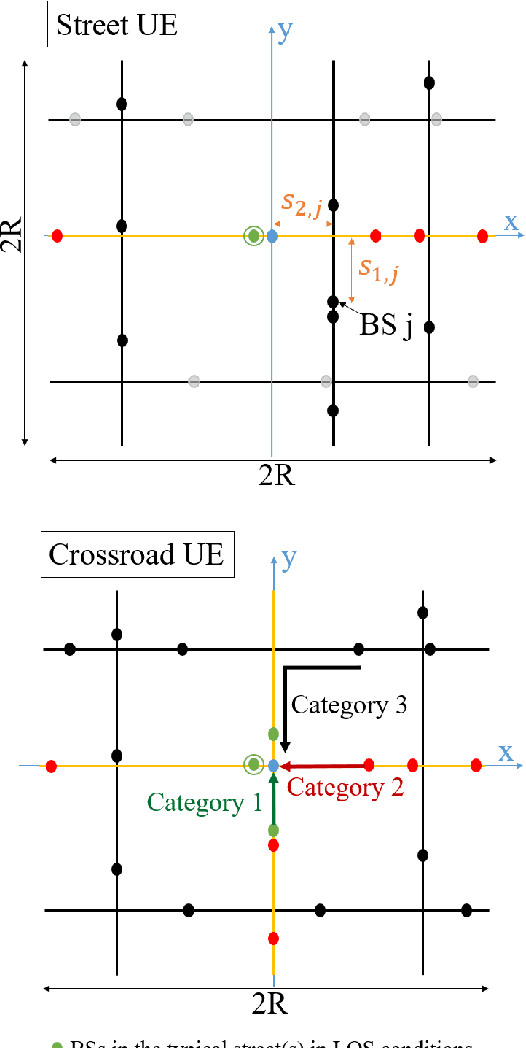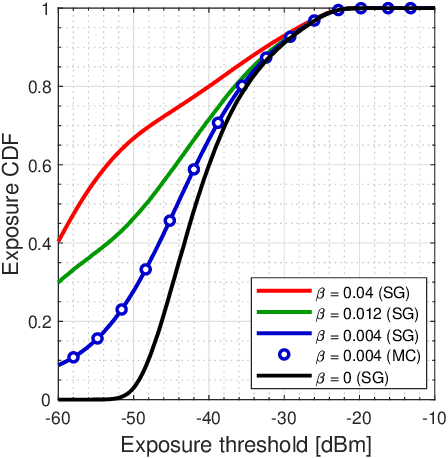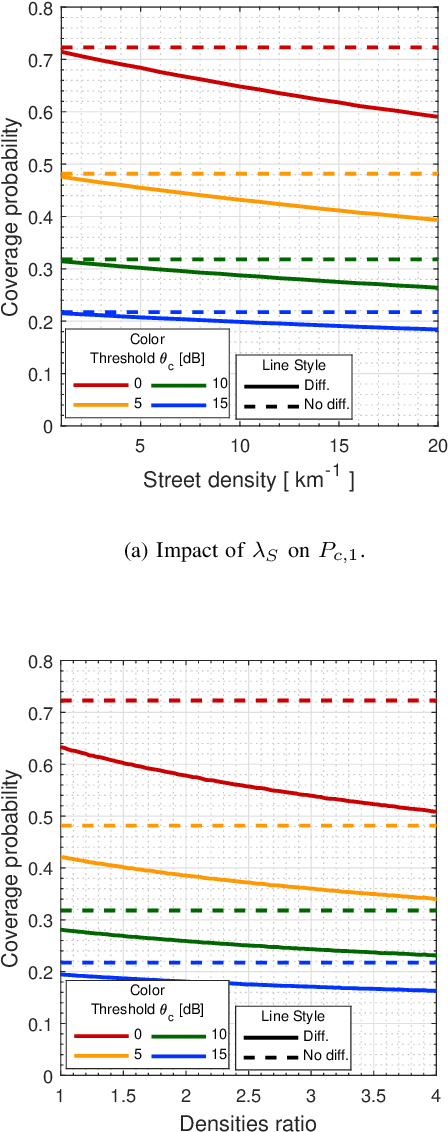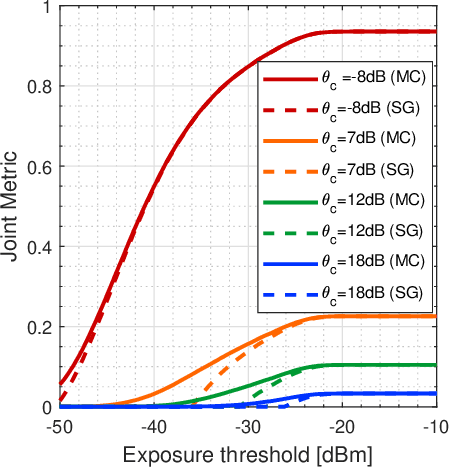Philippe De Doncker
A Spatial Data Focusing and Generalized Time-invariant Frequency Diverse Array Approach for High Precision Range-angle-based Geocasting
Feb 24, 2023Abstract:A novel unified frequency diverse array (FDA) and spatial data focusing (SDF) approach is proposed to simultaneously overcome time-variance and precision constraints of conventional FDA in geocasting, i.e., spatially confined broadcasting, scenarios. This paper describes a free space FDA-based SDF (FDA-SDF) system model for 2-dimensional range-angle-based focusing, including a generalized multi-purpose baseband approach for time-invariant FDA, complemented by SDF processing for improved spatial focusing precision and reduced array size. Comprehensive analytical derivations - general for any frequency offset configuration - describe the geographical FDA-SDF properties and design rules, such as geocast delivery zone steering, location, uniqueness, and size. Simulations of the proposed scheme validate theoretical derivations and demonstrate FDA-SDF's superior spatial precision and minimal design complexity. In particular, using novel alternating logarithmic frequency offsets, a 3-antenna FDA-SDF setup is shown to match the radial and azimuthal precision of its beamforming-based FDA counterpart using, respectively, 64 and 24 antennas.
Joint data rate and EMF exposure analysis in Manhattan environments: stochastic geometry and ray tracing approaches
Jan 26, 2023



Abstract:The objective of this study is to jointly analyze the data rate and electromagnetic field (EMF) exposure in urban environments. Capitalizing on stochastic geometry (SG), a network level analysis is performed by modelling these environments via Manhattan Poisson line processes (MPLP). Using this framework, a number of performance metrics are derived: first moments, marginal distributions and joint distributions of the data rate and exposure. In addition, the original Manhattan model is generalized to include advanced features: corner diffraction, presence of potential blockages in streets, and users positioned at crossroads. As a second approach, deterministic ray tracing (RT) is utilized to compute the same metrics. The two methods are shown to provide close results on the condition that the model parameters are coherently selected. Furthermore, the numerical results enable to gain insight into several aspects: the role of the propagation mechanisms in the performance metrics, existing trade-offs between the rate and exposure requirements, as well as the impact of the user location (at a crossroad or in a single street). (This work has been submitted to the IEEE for possible publication. Copyright may be transferred without notice, after which this version may no longer be accessible)
 Add to Chrome
Add to Chrome Add to Firefox
Add to Firefox Add to Edge
Add to Edge